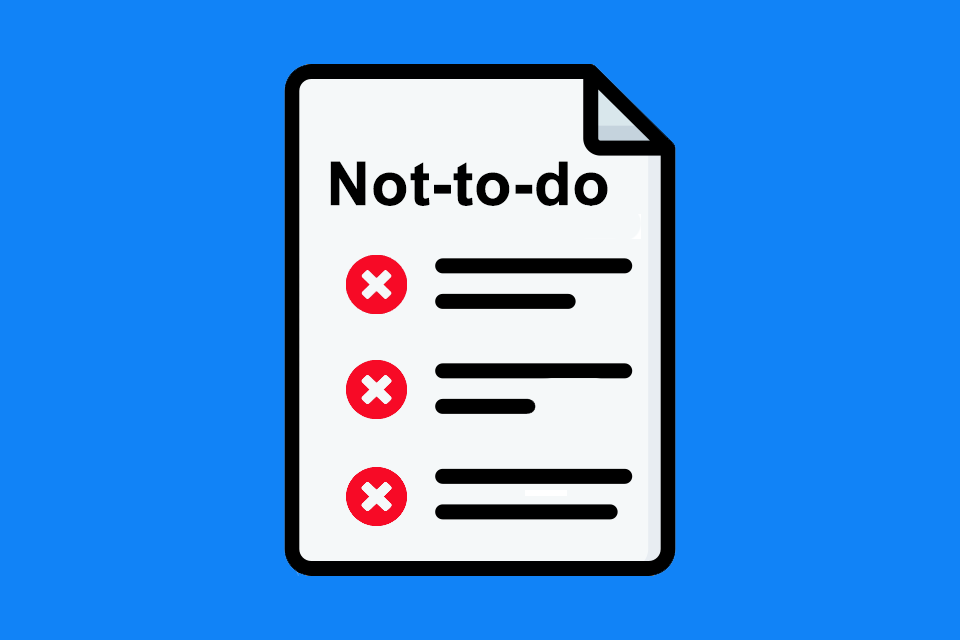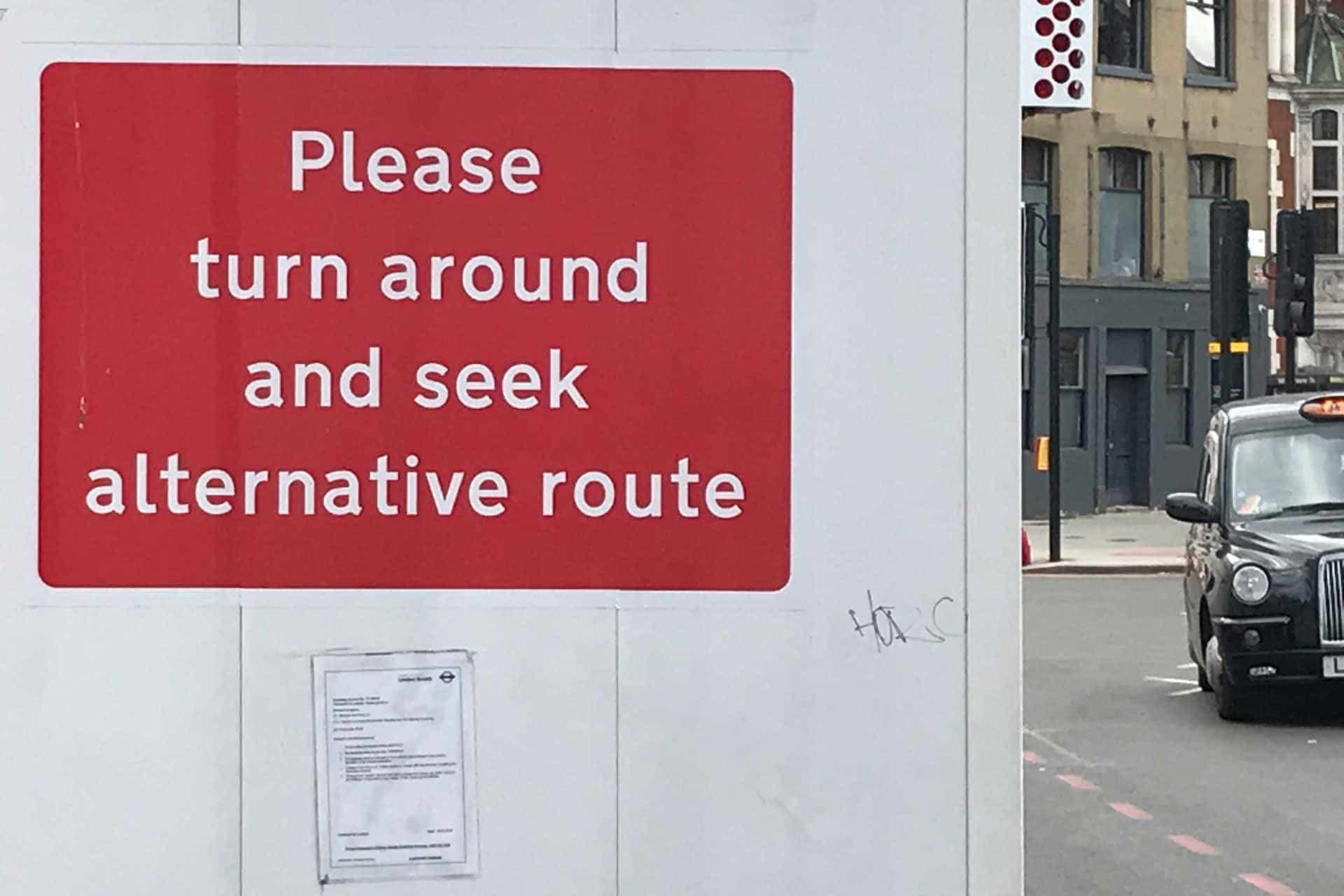What is a Not-to-do List?
Smartpedia: A not-to-do list is a enumeration of things you want to avoid or minimise in order to focus on more important things.
Not-to-do list – documenting conscious decisions against doing something
“Deciding what not to do is as important as deciding what to do” Steve Jobs is reported to have once said. A not-to-do list is a tool for documenting things you consciously decide not to do. It is thus a counterpart to the well-known to-do list and focuses on tasks or activities that one wants to avoid or on insights that one wants to pay attention to from now on.
The origin of the not-to-do list is unclear, but the concept is gaining popularity in the time management and productivity literature. Using the concept can be useful as it helps to minimise distractions or avoid wasting time on unimportant or unproductive things. Although there is probably no concrete evidence that not-to-do lists are actually effective, many people find them helpful in organising their thoughts and setting priorities. It can also help raise awareness of time-wasting habits and enable individuals to make conscious choices to avoid them.
Contents and examples of a not-to-do list
Of course, everyone is free to decide whether to document personal, professional or even strategic elements in a not-to-do list.¹ And organisations are also free to keep corresponding lists. Here is a selection of possible contents and examples:
- As an organisation, you recognise the benefits of sharing formats and therefore do not want to do without them in the future: “We will no longer complete a project without an After Action Review.”
- As a manager, you no longer want to carry out all tasks yourself and bear the responsibility accordingly, but involve employees more: “I no longer do everything myself, but delegate activities or transfer responsibility in subject areas completely to selected employees.”
- As a manager, you want to avoid distractions: “I don’t let myself be permanently distracted by new emails and therefore switch off all notifications.”
- As an employee, you don’t want to take on tasks if the meaning is not clear to you: “I can’t take on tasks without clarifying goals, motives, reasons.”
- As a human being, you don’t want to be predatory any more and prioritise everything else higher: “I don’t give up breakfast and I don’t give up regular breaks. I don’t work on holidays and I’m not available all the time.”
- As an employee, you don’t want to avoid unpleasant tasks: “I avoid procrastination and eat-that-frog.”
All of the examples could also be on a to-do list with adapted wording. Since both types of lists are their respective counterparts, this is also not surprising. People can declare “finish things” as a to-do or “not quite finish things” as a not-to-do.
Differences between a to-do list and a not-to-do list
In a way, both approaches are two sides of the same coin; however, the concept of a not-to-do list is special:
- A to-do list usually shows all the activities that need to be done in a defined period of time. A not-to-do list, on the other hand, contains activities that should not be done, are often of a more general nature (“Don’t answer any calls with an unknown number!”) and are sometimes not even actively planned.
- A not-to-do list can contain appeals, insights or wisdom that are intended more as a basic orientation. (“I don’t please everyone!”) A “normal” activity list, on the other hand, contains expected activities that are pending active implementation.
- Most of the time, the items on a normal activity list are ticked off or crossed out after completion, whereas with the counterpart, entries are rarely crossed off or marked as completed. This is also due to the fact that there can be no “done” for an activity that is not to be carried out. Or to put it another way: One list offers a kind of success control, the other does not.
- The scope of a to-do list usually grows and shrinks relatively quickly. New activities are continuously added while others are completed. In comparison, the not-to-do list grows rather slowly and individual items are not or rather rarely deleted.
Many to-do lists are provided with additional information – planned efforts, colleagues involved, deadlines, etc. Such information is not included in the not-to-do list. Such information is mostly not needed for the not-to-do list and is therefore missing. - Common to-do lists are prioritised, while lists with things that do not need to be done are not prioritised.
Advantages of a not-to-do list
There are a number of benefits that can be realised by using a not-to-do list:
- Avoids wasting time on less important or unproductive tasks.
- Improves focus and actively helps to learn from insights and experiences.
- Encourages delegation of activities and responsibilities (if appropriate staff are available).
- Helps to gradually change personal behaviours and reduce possible indecisiveness.
And last but not least, the list can also help to avoid stress: “Don’t take on more tasks than you can do!”
Impulse to discuss
Are negatively formulated lessons learned the same as a not-to-do list?
Notes:
[1] In some publications, such a classification is also referred to as “dimensions of the not-to-do list”.
In software development, there are always discussions about the documentation in the code. Should this possibly also be on a not-to-do list?
Here you can find a video about The Importance Of The Not-To-Do List.
If you like the article or would like to discuss it, please feel free to share it in your network. And if you have any comments, please do not hesitate to send us a message.
And here you will find additional information from our t2informatik Blog:



